Yesterday, at the Fire Department Museum, we learned about an excellent way to get to know San Francisco, and we only have 1 day to use this. It is called City Guides and it is a series of walks throughout the city comprising history, education, hikes up hills, through wine country, etc. They have a plethora of walks. Gary and I looked at the brochure and found quite a few that we through we’d like to take but - we have only one day left in SF to take them. Oops. Why couldn’t we have learned about these much earlier? Now, we have to pick one for the only day we have left and it is - San Francisco during the Gold Rush.
We were supposed to meet downtown at the Transamerica building, you know, the one with the pointy top, at 2:00 and we’d get a tour of how the Gold Rush shaped that area of San Francisco. The most telling statistic about SF during the Gold Rush of 1849 was SF was a sleepy town of 300 in 1848 but a bustling city of 25,000 by 1849. And, 73 percent of the citizenry was between the ages of 20 and 40, with 92 percent male. Whoo-eee. Great odds. But there were a few enterprising women as well.
Lots of new businesses popped up: Ghirardelli chocolates, Levi Strauss jeans, Wells Fargo bank to name some better known ones. Here are two pictures which show you the changes in the landscape. The first is obviously before the gold rush and the second is several years after it.
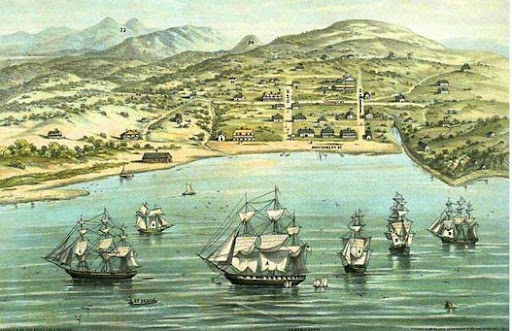
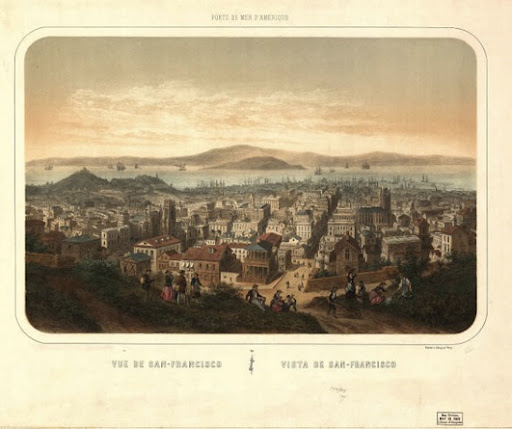
“It is an everyday occurrence,” wrote a Nevada City miner in 1851, “to see a coffin carried on the shoulders of two men, who are the only mourners and only witnesses to the burial of some stranger whose name they do not know.”
But the lure of gold enticed people to emigrate here, no matter the problems. A miner’s $8.00 a day out here certainly beat the coal miner making $1.00 a day out East. BUT, and here’s the rub, the prices were just as astronomical. Inflation was the norm for wages but also for goods. A loaf of bread that sold for 4 cents in New York sold for 75 cents in the mines. An 1849 report from Sacramento said eggs were $1 to $3 apiece; apples $1 to $5; coffee $5 a pound; a butcher knife $30, and boots $100 a pair. $100 for a pair of boots doesn’t sound too bad - but these were 1849 prices.
H. A. Harrison, in a letter to the “Baltimore Clipper,” dated San Francisco, February 3, 1849, gives the following price-list: Beef, per quarter ………. $20.00 Fresh Pork, per pound ………. .25 Butter, per pound ………. 1.00 Cheese, per pound ………. 1.00 Ham, per pound ………. 1.00 Flour, per barrel ………. 18.00 Pork, per barrel ………. $35 to 40.00 Coffee, per pound ………. .16 Rice, per pound ………. .10 Teas, per pound ………. .60 cents to 1.00 Board, per week ………. 12.00 Mining Cradles ………. $20 to 60.00 Mining Pans ………. $4 to 8.00
There were 3 ways to get to SF:
overland across the US but this was long and often dangerous,
down to Panama by ship, across the jungle and then onto another ship up to SF but this was disease ridden and also dangerous
around South America where the violent storms made that journey more than dangerous.
None of these routes was safe nor easy but thousands heeded the cry of gold and, because their lot is life wasn’t the best anyway, thought they had nothing to lose and everything to gain. On to California. And, when they got here, many took off just as fast for the gold fields. Many others stayed to supply those who were taking off for the gold mines: Levi Strauss and the founders of Boudin Bakery come to mind. Many ships were abandoned and sunk in the harbor since the crew had left. Then, when the harbor was filled in to make the land larger to hold the people crowding into SF, these ships were covered and are now part of the ‘bedrock’ under most of the financial center. In fact, one street is named ‘Balance’ Street since the ship Balance is directly under it. It’s actually on one of the maps I put in the blog on April 6.
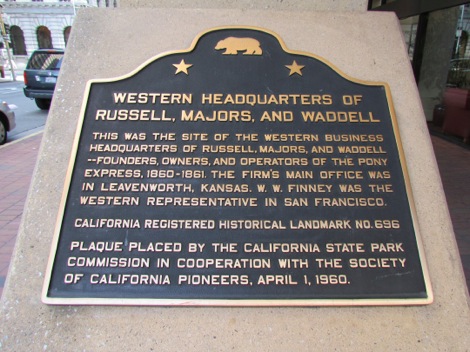
San Francisco itself was a wide open city with 3 major pastimes: prostitution, gambling and drinking. It was said at one point that there were 1 fire and 2 murders every day along with the 30 homes that were built.
As we toured the buildings and streets in what is the financial area and the older area, we learned a lot about the history of SF and how they are still trying to preserve much of it. Here’s a new building build around and over an older building.
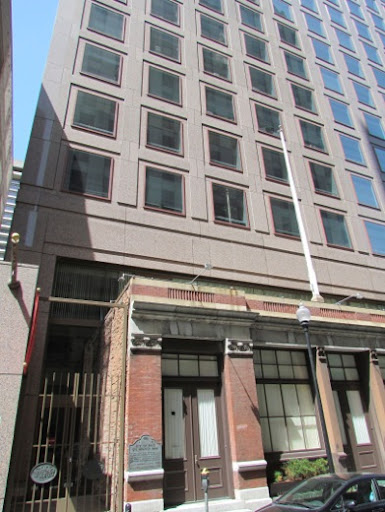
However, in most cases, newer buildings have replaced older ones and we saw plaques instead of the older buildings.
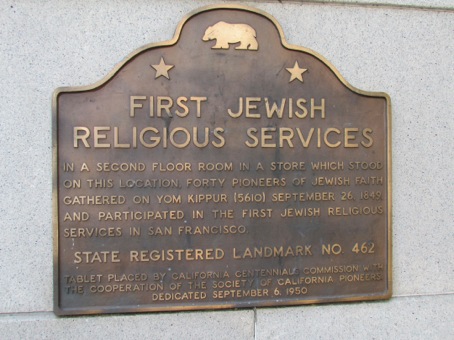
At one time in San Francisco history, a permit was given for the construction of a new building only if the building had some public space in or around it. And, they had to put a sign on the building telling everyone that where this public space was. Of course, the public space might be on the roof and the sign might be very small but some buildings did build some very nice small parks next to them. Here is one we walked past.
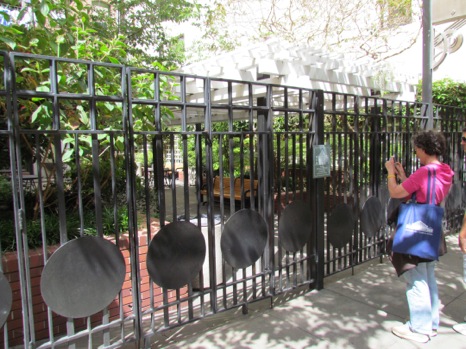
Meanwhile, it was a fascinating tour and I wish we had time to take more of the tours that were offered through this group.
We then went back to Chinatown which was only a few blocks away to see a few things we missed. We spent some time on Stockton Street which is the real ‘Chinatown’ where the Chinese Americans shop as opposed to Grant Street which is the tourist street. There is a real difference in goods sold on each street. You can’t find a single San Francisco t-shirt on Stockton Street and no stores carrying 56 kinds of ginseng on Grant Street. Stroll down Stockton Street if you ever get to San Francisco.

Here’s a true San Francisco sight: trolley wires strung across the intersections.
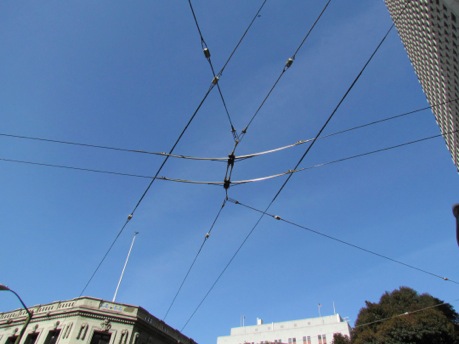
Almost our last day in SF and we’ve filled it full. Time to relax - oh, no, we need to get ready to rock and roll on the first.

No comments:
Post a Comment